Retailers are getting ready for another sparkling year ahead as varieties such as Prosecco, Cava and Asti continue to woo the nation, to the detriment of Champagne.
“Sparkling wine is doing well and we have increased our range accordingly,” confirms Kay Patel, who runs four Bestway stores across East London.
And it’s a story that many in the convenience sector can shout about. “Sparkling is a growing sector for us, especially Prosecco, which is selling extremely well,” agrees Roli Ranger, who runs a Londis store in Ascot, Berkshire. “People are happy to pay for a good-quality Prosecco rather than a £20 Champagne, which is reserved for a treat occasion, while Prosecco is becoming more everyday.”
There are other stories of success in wine, too, and overall the market saw sales rise 14.3% in 2013 (Nielsen) but retailers, and suppliers, agree that it is still a difficult fixture to plan out.
Roli has allocated more space to sparkling, but as a consequence he is considering cutting back on reds, which take up valuable ambient space in store.
Many agree that shelves can become over-crowded and confusing. “Wine can often be a challenging fixture to plan, as there is still a general lack of understanding by consumers and retailers about the main differences between the many hundreds of wines on offer,” explains Paul Wanless, convenience and impulse manager of Sogrape’s UK agency, Stevens Garnier. “For convenience stores, brands offer familiar and reliable products to help them decide upon their purchase. However, it is important not to rely too heavily on one brand or one region.”
Wanless suggests offering a variety of different wines rather than lots of brands within the same price point, and often the same varietal.
Over the past 12 months consumers have definitely been relying on their local stores for a good supply of sparkling wines.
“In our Bestway stores we don’t sell a lot of Champagne, especially now that most of it has broken the £30 barrier - it’s just too expensive,” says Kay. “People are much happier to pay for Asti, Prosecco or Cava, and there are more sparkling varieties now. Oyster Bay from New Zealand has a range of three varieties. They look good and they are all popular.”
Tightening the range
Spar has dramatically up-weighted its range review process, part of which has been to reduce duplication “in order to make room for new opportunities”, according to Chris Lewis, Spar UK licensed trading director.
For the wine category this has meant a reduction in the total sku count from 523 to 375 lines, and within this there is a core range of 162 lines, which now accounts for 90% of all sales.
“Within the 162 core lines, each country has a balanced range - by variety, price point, size and colour, and of course Spar own label,” says Lewis. “There are 57 sku’s that account for 44% of sales, and has become a tight and effective range.”
Lewis explains that by tightening the range the category has grown ahead of the market and the company has found considerable efficiencies in managing a smaller range and Spar has also been able to build much stronger supplier relations.
Roli has also introduced the Oyster Bay Sparkling range in his Londis store. “At £13 it isn’t cheap, but it is doing well,” he confirms.
And suppliers and producers are also reaping the rewards from the successful sparkling category. Myliko Wines confirms that Prosecco in particular has helped drive sales for the company, while Cava specialist Freixenet says the sparkling category presents huge sales opportunities for retailers.
“It is the fastest growing BWS category in both the on and off trades and the only category in double-digit growth,” says managing director Damian Clarke. “The convenience sector shows the fastest growth and now accounts for 25% of the sparkling wine category.
“The category is boosted by Italian sparkling wine, with Prosecco driving growth by attracting new shoppers. Spanish sparkling wine has the second largest share by country of origin and represents 33% of the category, and therefore retailers are encouraged to stock Cava alongside Prosecco, particularly as a recent poll demonstrated that Cava is one of Britain’s top-rated imports among consumers.”
He explains that Freixenet offers a range of Cava styles under its flagship Cordon range, including Cordon Rosado, made from two Spanish red grape varieties.
Price points
Different price points in the wine category have been faring well.
“This year we have noticed that people are trading up to £15 bottles,” says Kay. “Brands such as Campo Viejo offer price points at £5.99, £8.99 and £14.99 and we are seeing more people moving up to the higher prices.”
Pernod Ricard UK (PRUK), brand owner of Campo Viejo, confirms that the brand has been doing well in the convenience sector, with year-on-year growth of 25.2% in volume and 23.7% in value (Nielsen Impulse to May 2014). The company’s New Zealand brand, Brancott Estate, has also excelled this year in convenience, up 56.8% in volume and 57.6% in value.
The rise in people trading up is down to the more buoyant and positive economic environment, according to Julie Ingham, who is responsible for marketing at CWF.
“This has led to an increased consumer confidence and the willingness to loosen the purse strings in order to celebrate and have a little fun,” she says.
But while there is a trend of trading up, retailers are also reporting that consumers want lower price points, too.
“We are seeing an increase in demand for the cheaper wines, at about £3,” Kay explains. “Many of these wines are ones which have been repackaged or revamped, and they appeal to customers who may not know their wines and want a value option. It’s a totally different type of customer.”
In the Ascot Londis store, meanwhile, Roli has noticed yet another pricing trend.
The lighter side
One segment of innovation in wine has been with lighter styles.
Pernod Ricard brought out the Jacob’s Creek Cool Harvest range in 2012, offering a lower ABV than its Classics range. The company recently added a pinot grigio varietal in response to consumer demand for light and fresh wines.
Its Brancott Estate Flight, a premium low-alcohol range, also taps into this.
Myliko has also seen demand for the lower alcohol variants. “We are seeing a trend for lighter styles such as Canei white and rosé, which have a lower alcohol percentage at 5.5%, but still have a consumer-friendly flavour profile,” says Nish Kotecha, director at Myliko Wines.
“Many wines such as these are available in 20cl formats, which are perfect for the convenience sector to market for picnics or festivals.”
Lighter styles of wine are high on the agenda for Blossom Hill, which introduced Blossom Hill Sun-Kissed Red and White in May this year.
The company says the wines were created in response to research which showed that 48% of the brand’s drinkers desired a lighter, fruitier wine taste, reflected by the general move towards fruitier styles of other alcoholic drinks.
And E&J Gallo recently launched its Summer Rosé variant, which sits in the Gallo Family Vineyards stable alongside Summer White and Summer Red (the latter hit the headlines when it was launched because it is designed to be drunk chilled).
The latest addition, Summer Rosé, is a light 5.5% ABV wine designed to be served chilled.
The producer also has plans to drive growth in the Moscato category, a varietal which is naturally lower in alcohol. It’s a category that already appeals to consumers here, but since 2009 Moscato has experienced a growth of 481% in the US and added $323m (£192m) to the wine category, according to the company.
The UK is developing a similar trend for sweeter and lighter styles of wine so there could be plenty of potential for Moscato - and Gallo has big plans to tap into this opportunity, starting with a marketing campaign covering the Gallo Family Vineyards brand and Barefoot Wines.
“At the moment a lot of retailers find there is a lot of wine all on promotion so we have had to tighten the range now to accommodate the fact people are looking for deals,” he says. “The £6 price point has been key - people are now savvy that a £5 wine minus the government duty equates to a wine that isn’t good quality, but £6 is seen as better quality at an affordable price.”
Many suppliers have been working to tap into this £6 to £8 price bracket, with leading brands such as Rosemount Estate extending its range to help retailers capitalise on this. The brand has introduced a pinot grigio sauvignon blanc vermentino blend for this summer, priced at £6.49, specifically aiming to target consumers who seek out this price point.
With demand for a variety of price points, deciding which to stock isn’t easy. Spar licensed trading director Chris Lewis suggests stores should offer a choice of a few wines under £5 as well as a good selection of £5 to £8 wines, and then finally a select number of bottles over £10.
“This will cater for a wider range of consumers and a number of different occasions, from everyday drinking to dinner with friends, or a special occasion,” he says.
Experimentation
Anthony Habert, marketing manager for Mateus, says that consumers have become more adventurous, and this is adding interest at different price points.
Retailers who are able to tap into this consumer desire to experiment with wine have generally been successful at encouraging people to trade up.
Habert says: “It is important to keep the range, or at least a section of the range, refreshed and varied. Wines such as new Mateus Expressions Maria Gomes chardonnay will certainly fit the bill in piquing the consumer’s attention.”
Matt Turner, global export manager at Brown Brothers, agrees that consumers want to experiment with new styles of wine, and his company has been working to bring in new styles to tempt British palates.
“Stylistically, people are moving towards the more restrained and cooler-area styles with a lot less oak, and as a result brands have had to adapt,” he says. “Tasmania has a lot to offer in this space and is generating real interest and excitement. Earlier this spring, Brown Brothers launched the 18 Eighty Nine sauvignon blanc to the UK market for the first time, having switched to using Tasmanian fruit for this line from the 2013 vintage onwards.”
He adds that Brown Brothers has had “huge success” in the UK with varietals that people do not know much about, but which tick the boxes - for example, the Tarrango, Orange Muscat & Flora, and Cienna wines.
Closer to home, CWF’s Ingham is upbeat about the future of British wine in the UK and she says the company anticipates continued growth of the market.
“We expect our Silver Bay Point and Autumn Harvest wine brands to continue to grow,” she says. “Our success in the British wine market has been further strengthened with The Straw Hat, a range of three wines at 11% ABV.”
Spar UK also confirms that consumers are seeking out new offerings, as they try to find the best balance between quality wine at an affordable price.
Its Exclusives wine range has achieved sales of £2.8m in the past year since it was launched. The range, which comprises 12 different wines from three countries, aims to provide consumers with credible, affordable alternatives to either own label or branded wines.
The Exclusives sparkling Italian lines Perlezza Prosecco brut and rosé variants have reached £1.5m in sales, with 90% distribution in licensed Spar stores.
Spar’s Chris Lewis says: “These sales prove our Exclusives range truly fills the gap in the market between own label and brands, and has helped Spar boost the profile of its wines as offering fantastic quality at a good price.”
Driving innovation
With consumers keen to experiment with wine, making sure your range has something interesting and unique could draw new shoppers into the category.
Free-from wines
Alcohol-free wines have recorded good growth in the past year. According to Nielsen data, the sub-category has grown 14%, with leading brands such as Eisberg recording 30% growth (week ending 21 June 2014).
“Consumers are increasingly demanding choice when looking for adult soft drinks and don’t want to settle for the normal raft of sugary carbonated drinks,” says Eisberg brand manager Fran Draper. “Convenience stores need to offer this choice in a limited space, so picking brand leaders in each low/no alcohol category is a guaranteed way to increase basket spend.”
The company says that in response to consumer demand for new flavours it has created a selection of mocktails to provide new ways of drinking the wines.
Roli explains that he may look at cutting down the number of wines he sells. “We have three metres of red wine, plus promotional bays, and we may condense this down to two metres. We are thinking about introducing something new, but still in wine.”
He says he has looked at ideas such as that introduced by Borough Wines, which allows retailers to have mini barrels of wine in store.
“Customers can buy an empty bottle and fill it themselves, and then bring the bottle back in for refills,” says Roli. “It’s cheaper, innovative and the wine changes every now and then, plus it’s good for recycling.”
Within the bottled market, suppliers are also trying to innovate. A new product from Echo Falls was revealed in May, and the producer hopes it will draw in a host of 18- to 34-year-old wine fans.
The fruit fusions range aims to offer ‘something new’ to the category, via its three variants. These are rosé with summer berries (9.5% ABV), red wine with raspberry & cassis (11% ABV), and white wine with white peach & mango (9.5% ABV).
“We believe our innovative fruit fusion wines will attract a new audience to the Echo Falls brand and the wider wine category as a whole,” explains marketing controller Amy White. She notes that the target audience for the brand are keen to experiment with flavours and often have a sweeter tooth, which makes dry wines unappealing for them. Many have shied from wine in the past, instead opting for sweeter drinks such as flavoured cider.
“The number of flavoured alcoholic beverages containing wine grew by 51% in the 12 months to June 2013, which we believe illustrates how increasingly important these styles of wine are for consumers right now.”
IN BRIEF
Pernod debuts sauvignon gris
Pernod Ricard has brought out a sauvignon gris variant under its Brancott Estate brand, with a retail price point of £10.49. The brand had a strong year in the convenience sector, and Pernod hopes fans will be keen to try the lesser-known varietal. “Sauvignon gris provides the opportunity for consumers to sample a new varietal as well as expand their experience of New Zealand wines,” explains Chris Ellis, commercial director for wines.
18 Eighty Nine range launched
Australian wine producer Brown Brothers introduced its 18 Eighty Nine range this year, targeting 22- to 44-year-olds. The two-strong range (a 2013 sauvignon blanc and a 2013 cabernet sauvignon) features eye-catching labels that are designed to appeal to those wanting to enjoy and share wine with friends. The range is available to independents and the on-trade.
Blossom Hill creates lighter range for summer
Blossom Hill has added two new wine products designed to appeal to modern tastes and summer drinking. Blossom Hill Sun-Kissed Red and White wines are available with a promotional rrp of £7. The variants are aimed at consumers who want fruitier styles of alcoholic drink.
Magic price point
Treasury Wine Estates is celebrating summer with new variants and campaigns across its ranges. Available now, the Rosemount Estate range has been extended to include a pinot grigio sauvignon blanc vermentino blend (rrp £6.49). It is hoped this new variant will help retailers capitalise on the £6-£8 price bracket which Treasury feels is under-developed in the channel.
Expressions range makes UK debut
Mateus Expressions was introduced to the UK earlier this year, offering four wines that combine Portuguese and international varietals. Expressions includes three rosé wines - baga & shiraz, baga & muscat and aragonez & zinfandel - as well as one white wine, a Maria Gomes and chardonnay blend.
Blossom Hill in marketing investment
Blossom Hill has embarked on a £2.1m marketing campaign for the brand. The ‘Wonderful World of Blossom Hill’ which focuses mostly on its Sun-Kissed Red & White range, includes TV, digital and cinema advertising as well as sampling and online activity. The ads, which are aimed at 25- to 44-year-old women, run on ITV, Channel 4, Channel 5 and will feature in previews of 27 films.
Barefoot Wine extends range
Barefoot Wine is stepping up marketing activity to inject further investment into the Moscato category, including the launch of the 2014 Barefoot Wine Beach Rescue Project and the introduction of Barefoot Ruby Moscato to join the three existing Moscato variants. Ruby Moscato is described as a “sweet, fruity red with tropical flavours of peach and red berry jam”.
Source
Sonya Hook


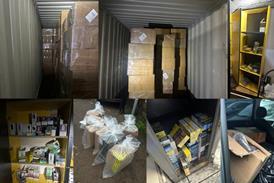


















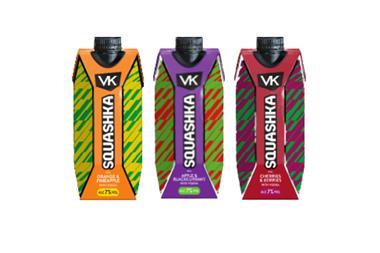

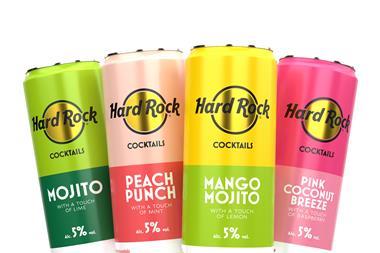



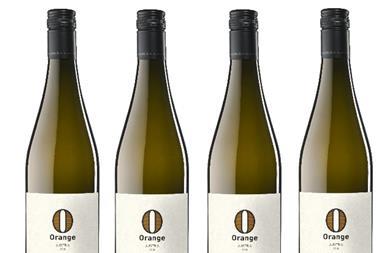

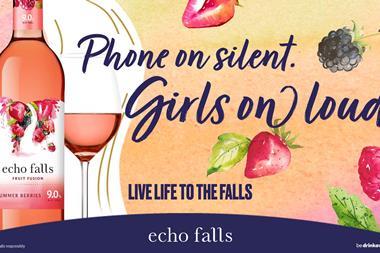


No comments yet